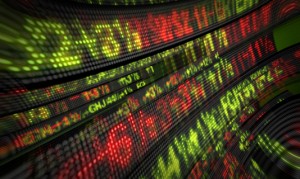If an investor would like more diversification, there is always the international dividend market. Potential investors may consider broad dividend options like the iShares Dow Jones International Select Dividend Index (NYSEArca: IDV), SPDR S&P International Dividend ETF (NYSEArca: DWX) or Powershares Intl Dividend Achievers ETF (NYSEArca: PID). For those who have been disenchanted with specific sectors, there are “ex-” dividend funds like the WisdomTree International International Dividend ex-Financials Fund (NYSEArca: DOO).
Again, if you believe in the growth potential of small-cap international picks, the WisdomTree Emerging Market SmallCap Fund ETF (NYSEArca: DGS) may suit your needs, or the more specialized WisdomTree International SmallCap Fund ETF (NYSEArca: DLS) could fit your objectives.
Foreign companies tend to offer higher yields than our domestic conglomerates, but the better payouts also come with higher risks. Large U.S. domestic companies are considered among the safest among the world but they come with low premiums to attract investors. On the other hand, the riskiest found in the emerging markets may generate much more enticing returns.
Risky, High-Yield Dividend Plays
Then, we have high-yield dividend ETFs like the Global X SuperDividend (NSYEArca: SDIV) and Guggenheim S&P Global Dividend Opportunities Index (NYSEArca: LVL) that follow high-yielding stocks of the world. While this seems like an enticing draw, these ETFs may include high-yield equity picks that provide unsustainable dividend payouts, which may lead to future random cuts. Additionally, the SDIV fund may also hold real estate investment trusts, which also help a boost yields, but REITs are not considered as qualified dividends.
The Dividend Landscape of Tomorrow
Currently, there are 402 dividend payers on the S&P 500, a 12-year high, and 122 companies have increased their dividends, with only three companies reducing dividends over the first quarter. Nevertheless, companies are still paying out a historically low level of their earnings to shareholders, which may leave room for more dividend payouts down the line.
The net debt of S&P 500 companies relative to EBITDA – earnings before interest, taxes, deprecation and amortization – is still two turns less than its trailing ten year average as a result of de-leveraging and de-risk following the financial crash.
Since the 2008 financial crisis, more companies have steadily increased dividend payments. For instance, Apple (NasdaqGS: AAPL), Agilent Technologies (NYSE: A), American Tower (NYSE: AMT), Coventry Health Care (NYSE: CVH), Gamestop (NYSE: ME), SAIC (NYSE: SAI) and Thermo Fisher Scientific (NYSE: TMO) are now offering payouts. Given the health of corporate balance sheets and the amount of extra cash on hand, companies may continue to increase dividend payments – S&P 500 companies are sitting on twice the amount of free cash they had five years ago.
 Dividend Payers Are Still Stocks
Dividend Payers Are Still Stocks
While the high market volatility experienced in late 2011 helped contribute to the push into dividend stocks and ETFs, dividend payers are still stocks, which means dividend payers will also be subject to general macroeconomic trends in the global market. Dividend stocks will experience capital appreciation or depreciation along with the general equities market; however, they have the added benefit of a dividend buffer in the case of market depreciation. Nevertheless, dividend payers make a good compromise between risky equities and safer bond assets. [JC Penney a Reminder of Dividend ETF Risks]